Article updated 25.11.2022
Teams groups and channels can bring clarity to Teams use effectively. Take advantage of our tips for managing Teams channels and make your job easier.
Channels in teams can create structures and bring clarity to team work. Each team can have multiple channels and each channel can have multiple tabs. When you create a new channel, a Posts tab is created for the channel for conversations, and a separate tab for the files.
Sometimes there may be many Teams groups and channels that they contain. In this case, it may be more difficult to utilize Teams in your own work. Read our five tips for working more clearly in Teams channels.
Hide and filter channels for clarity
Under Channels, as a team owner, you can specify whether the channel is visible to other team members or not.
Hide channels
When there are several channels, it is possible to hide them from the list in the Teams section, and it is possible to define on a channel-by-channel basis which activity the notifications come from.
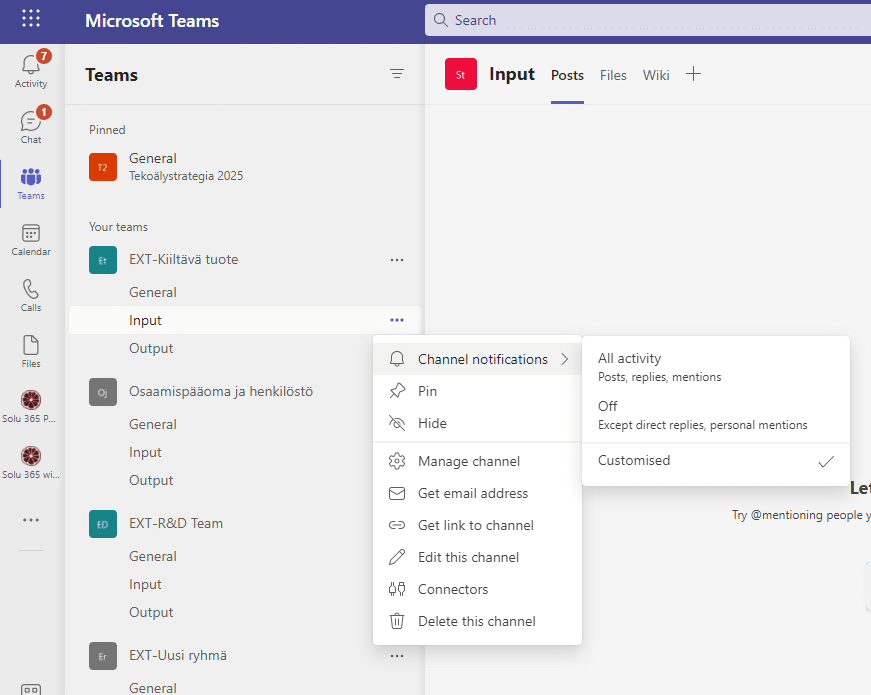
Note that the general channel for teams cannot be hidden, but other channels can.
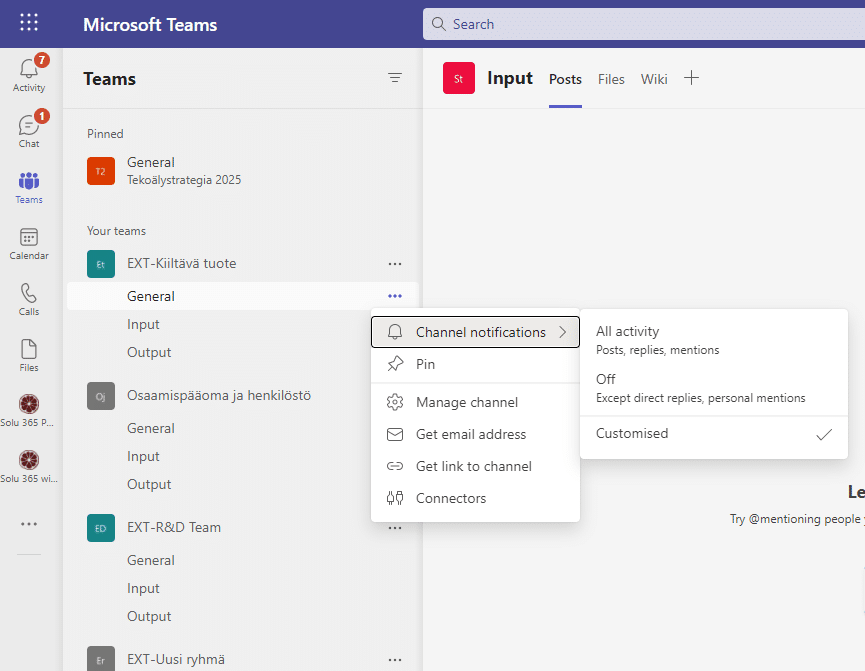
Filter channels
By clicking on the funnel icon at the top of the team list, you can search for teams using different search terms in filtering, making it easier to manage your teams.
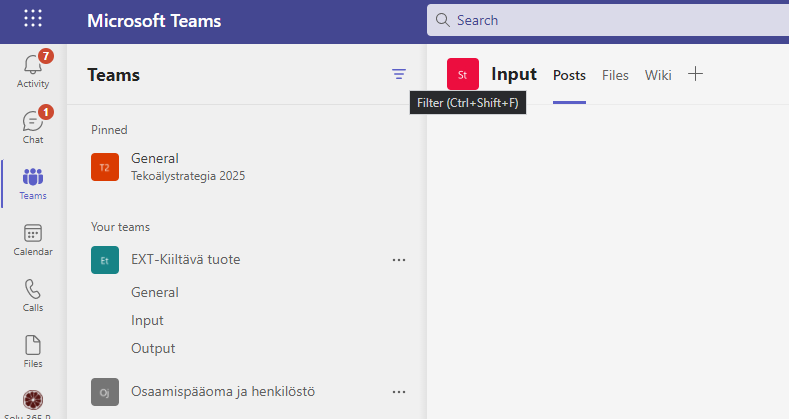
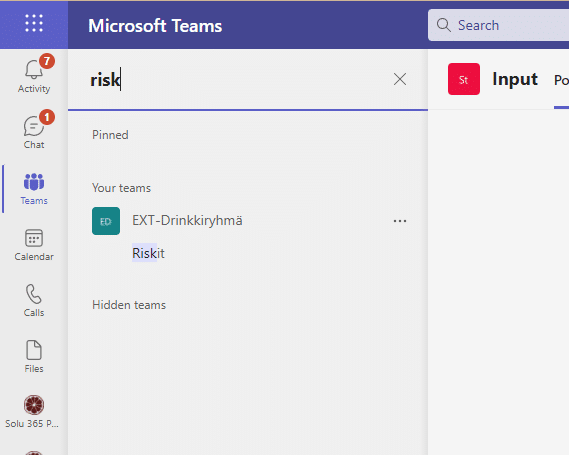
Tip 2: Take advantage of private channels
Private channels are a great way to differentiate, for example, the steering group’s own internal channel in a team with an external partner. The establishment of a private channel can be allowed or prevented at the organizational level.
The choice between a private or regular channel is made when the channel is created, and this setting cannot be changed afterwards.
Private channel in SharePoint
When you open a private channel in SharePoint, you have your own SharePoint site created for it, allowing you to work securely on documents for a limited number of users.
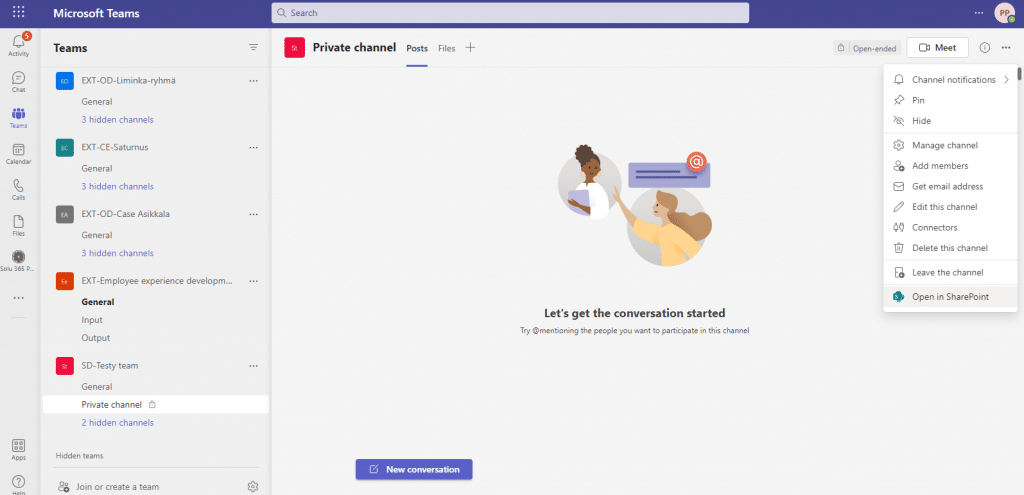
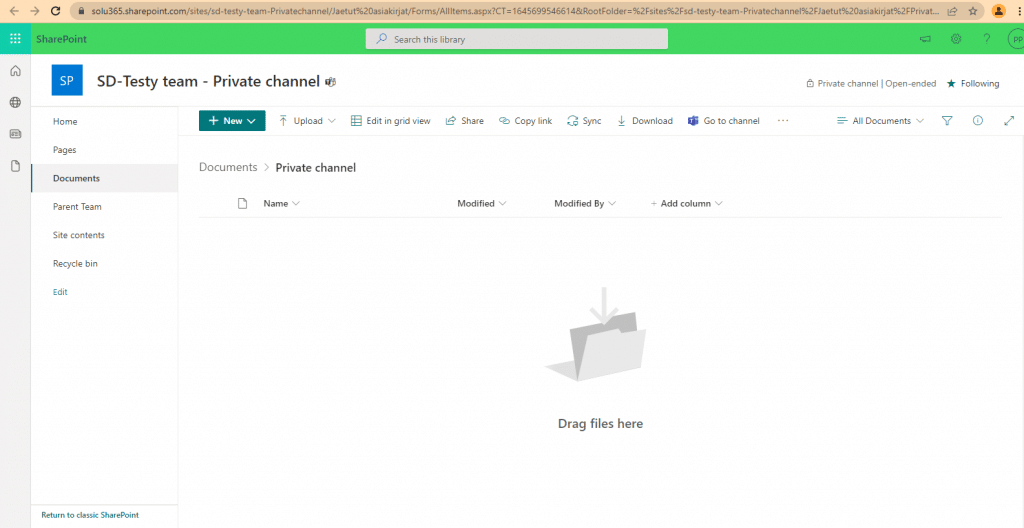
When you remove the rest of a site link, SharePoint redirects that channel to the home page.
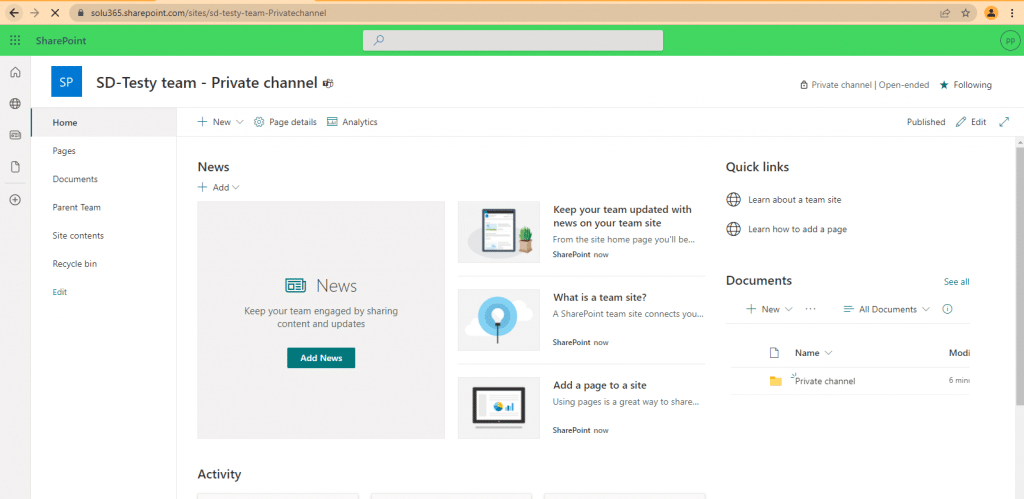
Tip 3: Use the channel storage location for the files
By default, the Files view, which is visible to everyone, shows all the files in the team. You can easily create a new folder or Office 365 file under the New menu.
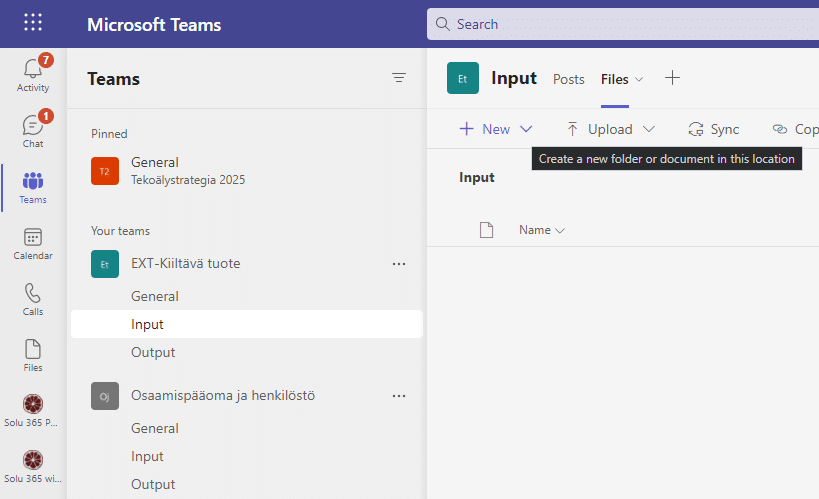
In Sharepoint, the General folder at the root of the Documents folder corresponds to Teams’ General channel. However, Sharepoint does not show comments on the document discussion, they only appear in Teams in the channel discussion.
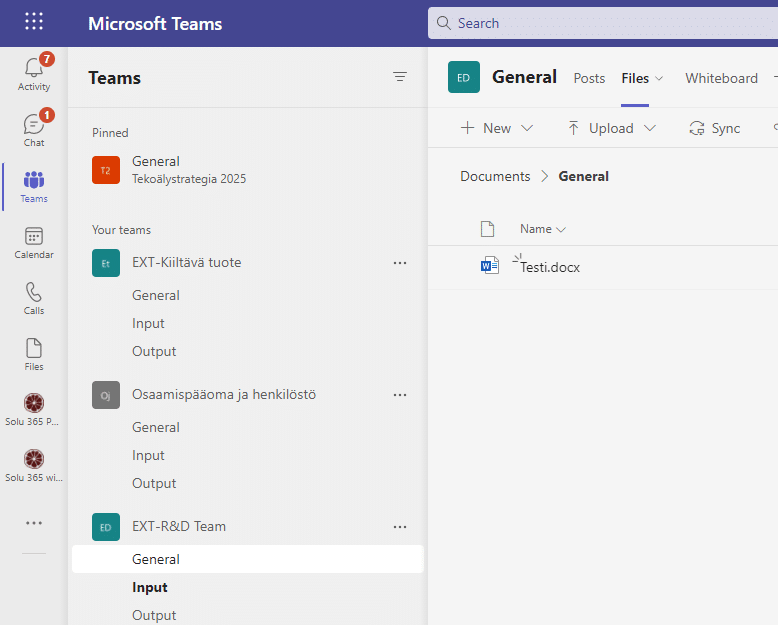
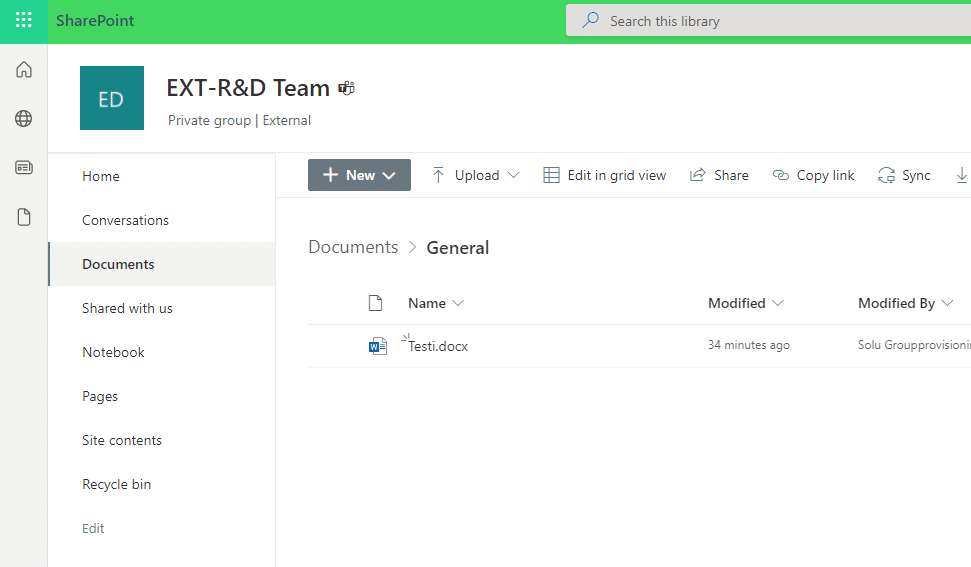
Tip 4: Edit channel settings
Channel-specific settings can be conveniently edited directly through the Teams list. Move the mouse cursor to the channel and click on the three-point menu that appears and select Manage channel. Alternatively, you can access the same settings view via the three-point menu in the upper right corner of the channel window.
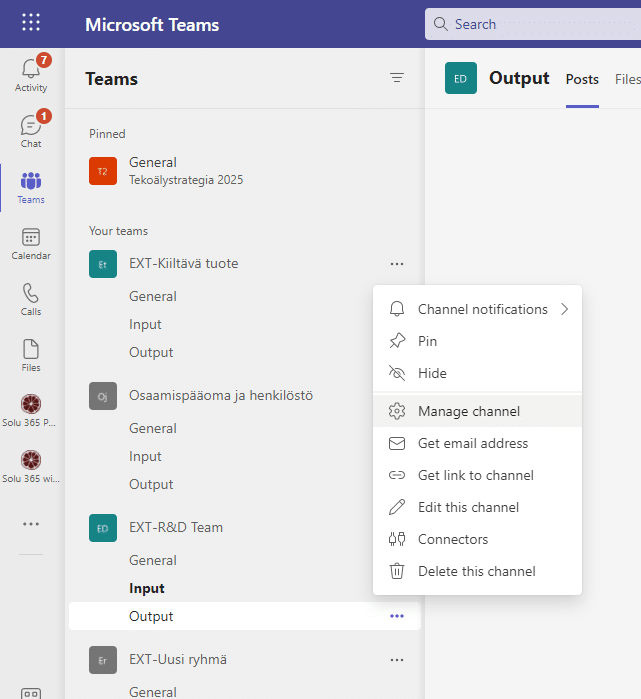
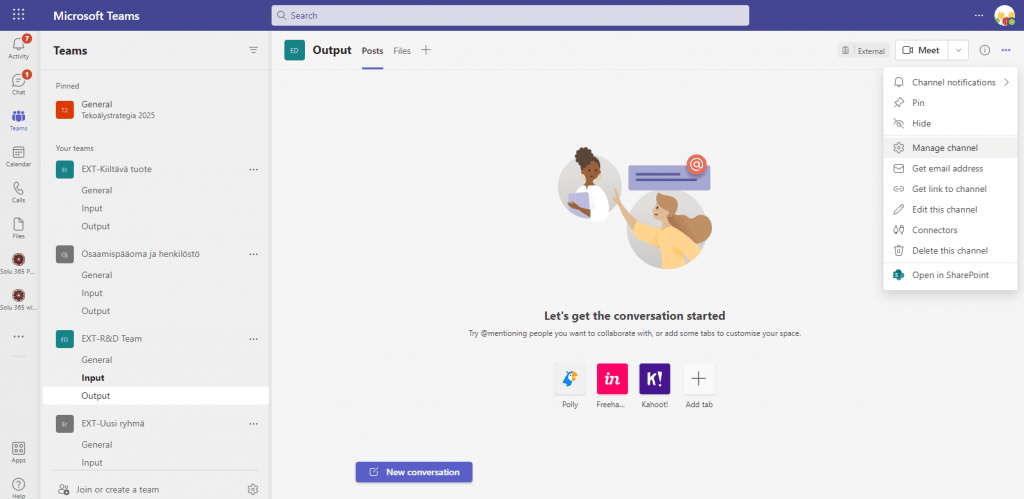
Note that Teams arranges the channels in alphabetical order. It is a good idea to use numbering if you want the channels in a certain order, for example according to the steps of the life-cycle model (Plan – execute – End).
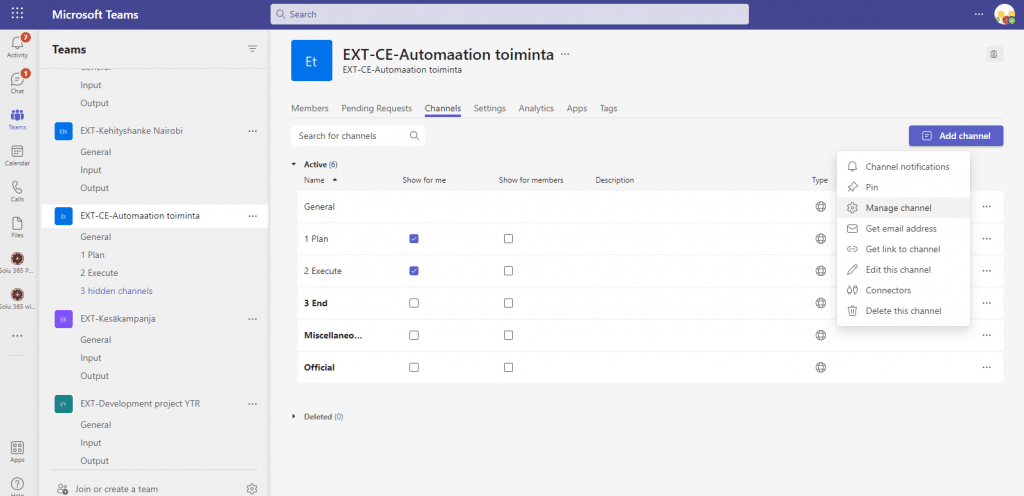
You can also change the channel name and description from the same three-point menu by clicking Edit channel, or alternatively from team management view, as pictured above.
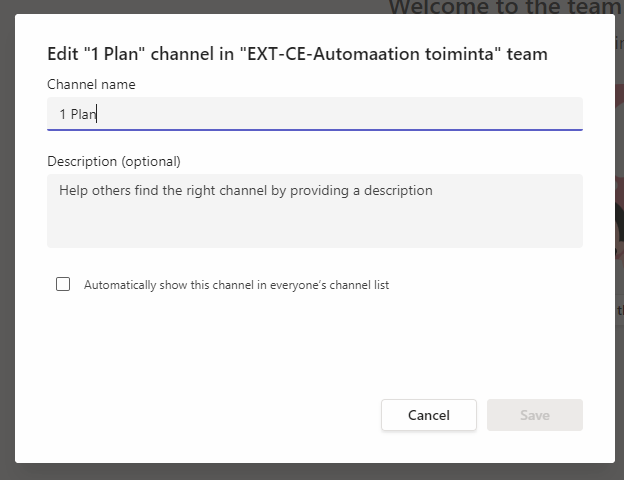
Tip 5: Automate the creation of Teams groups and channels
The creation of Teams groups and channels can be automated, making it easier to manage Teams groups. The Solu 365 tool makes it easier and faster to create teams and set up the necessary channels while improving security.
All you have to do is create a group and select the appropriate information in the fields on the creation form. Workgroup automation creates a group based on use cases predefined by the organization.
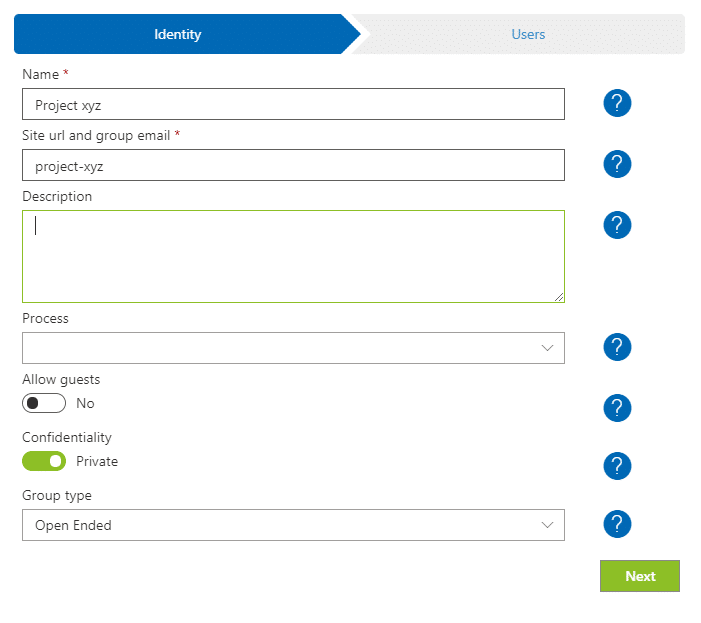
For example, a workgroup defined for project work could contain pre-created channels even according to the steps of the life-cycle model (Plan-execute-End). Planner task containers, OneNote memos, and file folder structures and file templates can also be integrated into the group creation process using Solu 365 automation, as needed.
Read more of our tips for effective use of Teams:
- Using Microsoft Teams effectively: 5 Tips for Teams settings
- Using Microsoft Teams effectively: 5 Tips for working with meetings
- Using Microsoft Teams effectively: 5 Tips for activating participants in meetings
- Using Microsoft Teams effectively: 5 Tips for a good meeting experience
- Using Microsoft Teams effectively: 5 tips for Teams groups
- Using Microsoft Teams effectively: 5 Tips for creating teams and channels
- Using Microsoft Teams effectively: 5 tips about tabs
- Using Microsoft Teams effectively: 5 tips about bots
- Teams management with Solu 365® workgroup automation
- Automate project management with the Solu 365® tool
Download Microsoft Teams guides
Download our guides to smooth Teams group management and make your organization’s virtual work easier. Leave your contact information and we will send the guides to your email.








